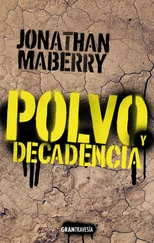That prompted a grunt of agreement from Corporal Meyer, the gunner, sitting in the right turret hatch. A grunt was his usual contribution to any conversation.
“Well, hopefully Ivan is more worried about Kiev right now,” said Langer.
“Hopefully,” said Hoppe.
“War’s almost over anyway,” said Koch. “In a month Stalin will be finished, we’ll march in a victory parade in Moscow, and then we can go home to Vienna.”
The crew was Austrian, like everyone else in 9 thPanzer. After their country had been annexed by Hitler in 1938 it was renamed Ostmark, they were declared citizens of the Reich, and their military was absorbed by the German Army.
By now — early September 1941 — they were veterans of Hitler’s wars. All of them had earned the Panzer Combat Badge for having been in at least three tank battles. They had fought together in the Netherlands and France the previous year, then in Greece and Yugoslavia last spring before the division was shipped east for the invasion of the Soviet Union.
Langer and his men did not question the rationale for it all. The Führer commanded; they obeyed. Such was the way of things. And thus far they had seen only victories. Germany seemed destined to rule all of Europe.
“Headquarters sent us all the way out here to capture an old church?” asked Schultz. “What’s so special about it, Herr Sergeant?”
“The lieutenant didn’t say. Strange place for one though. According to the map there isn’t a village within a hundred kilometers.” Langer twisted around and raised his binoculars. “Looks like our colleagues have arrived.”
A gray column of vehicles rumbled up a dirt road behind them, brown-red dust rising in a choking cloud in its wake. In the lead was a sidecar motorcycle. It was followed by a heavy eight-wheeled 231 armored car, a Volkswagen field car, half a dozen three-ton Opel Blitz transport trucks, a communications truck, and an anti-aircraft gun mounted on a halftrack. A light 222 armored car brought up the rear. One truck had a Nazi flag spread over its top for air recognition.
Langer noted the double lightning-bolt runes emblazoned on the registration plates.
“SS,” he said. “Can’t tell which unit.”
“A sun wheel swastika is the Viking Division and a key on a shield is the Hitler Bodyguard Regiment,” said Koch. “Those are the two Waffen-SS units in the Ukraine right now.”
“I don’t see any insignia at all. Not even a tactical symbol. Odd.”
They watched the convoy pull up behind the hill. Their platoon commander, Lieutenant Krugmann, climbed out of his tank and walked down to the Volkswagen. He exchanged salutes with two officers riding in the back. They conferred briefly and Krugmann returned to his tank.
His crisp voice came over the FuG 5 radio. “Provide overwatch while the building’s cleared.”
The platoon’s five tanks stood ready on the hill as an infantry squad jumped down from the trucks. Each soldier was clad in the field-gray uniform of the German Army but with the collar runes, cuff title, and sleeve eagle of the Waffen-SS. The cuff title would indicate their unit, but at this distance Langer could not read it.
The church had one entrance, a heavy, iron-bound wood door. There were no windows. The squad circled around the hill to approach it obliquely, an SS-Sergeant in the lead followed by a machine-gun team and several riflemen. Upon reaching it they edged along the front wall to the door. The sergeant kicked it in and charged inside, followed by the others.
Half a minute later he emerged and held up his weapon to signal all-clear, followed by shrill blasts on his whistle. In response the SS vehicles rolled up to the church and parked.
“Form a hedgehog,” said Krugmann. The tanks fanned out into a defensive ring around the valley, facing outwards. “We’ll be escorting the convoy back once they’re finished here. Everyone can relax in the meantime, but stay alert.”
Engines switched off. The silence was deafening as Meyers, Hoppe, Koch, and Schultz emerged, grateful to get out of the hot, stinking tank. Because of the heat they had stripped off their black wool jackets and just wore the gray shirts, sleeves rolled up.
The other tank crews were taking advantage of the lull to get fresh air, stretch cramped legs, and relieve themselves. Shadows lengthened as dusk neared.
Meyer munched on sausage. Despite being as skinny as a rail he seemed to have a bottomless pit for a stomach and never passed up a chance to eat. Schultz hopped on the rear deck and popped open a maintenance hatch. Grit was always getting into the engine and he fretted and fussed over his “Liebling.” Langer stayed in the cupola, observing the activity at the church through his binoculars.
“Who’s the fat one?” asked Koch. “He looks like he’s on parade.”
Langer focused on the Volkswagen. The two officers had stepped out. One was tall and lean and wore the collar tab of an SS Captain. The other was an SS Colonel, a rotund, spectacled man dressed in the prewar black SS uniform complete with shiny jackboots and red swastika armband. His bulging uniform looked crisp and new and boasted no decorations at all. He hardly seemed to fit the idealized SS image with its emphasis on physical fitness.
“Must be an SS part-timer who still has the old uniform,” said Langer. “His rank’s probably honorary. Civilians have to wear uniforms in occupied territory so this may be the first time he’s actually had to put it on.”
Hoppe snorted with contempt. Digging out a crumpled pack of cigarettes, he lit one and passed the rest around.
They watched as the SS officers gazed up at the church, the captain pointing out various details while the colonel bobbed his head in agreement. Once the latter was satisfied, the former barked out orders. Moving at double-time, a second squad dismounted and hauled out equipment and crates, carrying them inside. One truck towed a generator trailer; a power cable was unreeled and run into the church.
“What’s in there?” asked Koch, swatting a fly on his neck. “Supplies?”
“No idea,” said Langer. “Seems too small to store much though.”
“Maybe loot,” said Schultz, closing the maintenance hatch. “Icons and so forth.”
“Souvenirs for Herr Göring’s art collection,” said Hoppe, a sour look on his face.
Hermann Göring, commander-in-chief of the German Air Force, was notorious for his extravagant lifestyle and took full advantage of Hitler’s conquests to appropriate whatever valuables he could from the occupied territories.
The sun sank into its pyre in the west and a gibbous moon glowered down like a gleaming skull. The night was quiet except for the rattling drone of the generator, the church door outlined by a strong light inside.
The generator sputtered and stopped; the light blinked off.
A horrific bedlam of screams rang out.
The crews scrambled into their tanks, banging hatches shut. Engines roared into fierce life, spouting exhaust; turrets swiveled to aim at the church.
The screaming ceased.
A long, tense silence. Then the radio crackled. “I’ve lost contact,” snapped Krugmann. “Five-two-five, investigate and report!”
Langer repeated and acknowledged the order and dropped down into the turret. Schultz swung the Mark III around, keeping the headlights off. Langer looked through the cupola’s visor as they rumbled down the slope, wheels and tracks squeaking and clanking. Hoppe opened an ammunition locker, ready to load armor-piercing or high explosive shells as Meyer peered through the 50-millimeter cannon’s telescopic sight. Koch double-checked the ammunition belt of his MG34 machine-gun in the bow.
The tank stopped just short of the parked SS vehicles, silhouettes in the pale moonlight. All was still — still as a tomb. The only sound was the tank’s engine.
Читать дальше
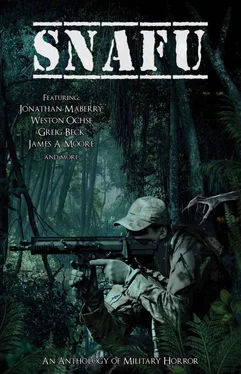
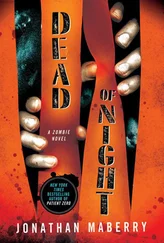
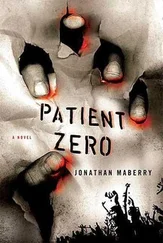


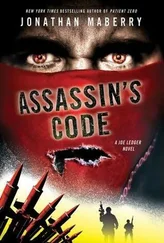

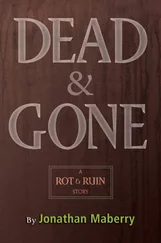

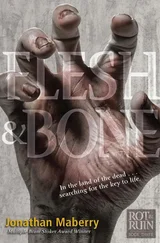
![Джозеф Нассис - SNAFU - Heroes [An Anthology of Military Horror]](/books/412548/dzhozef-nassis-snafu-heroes-an-anthology-of-milit-thumb.webp)
